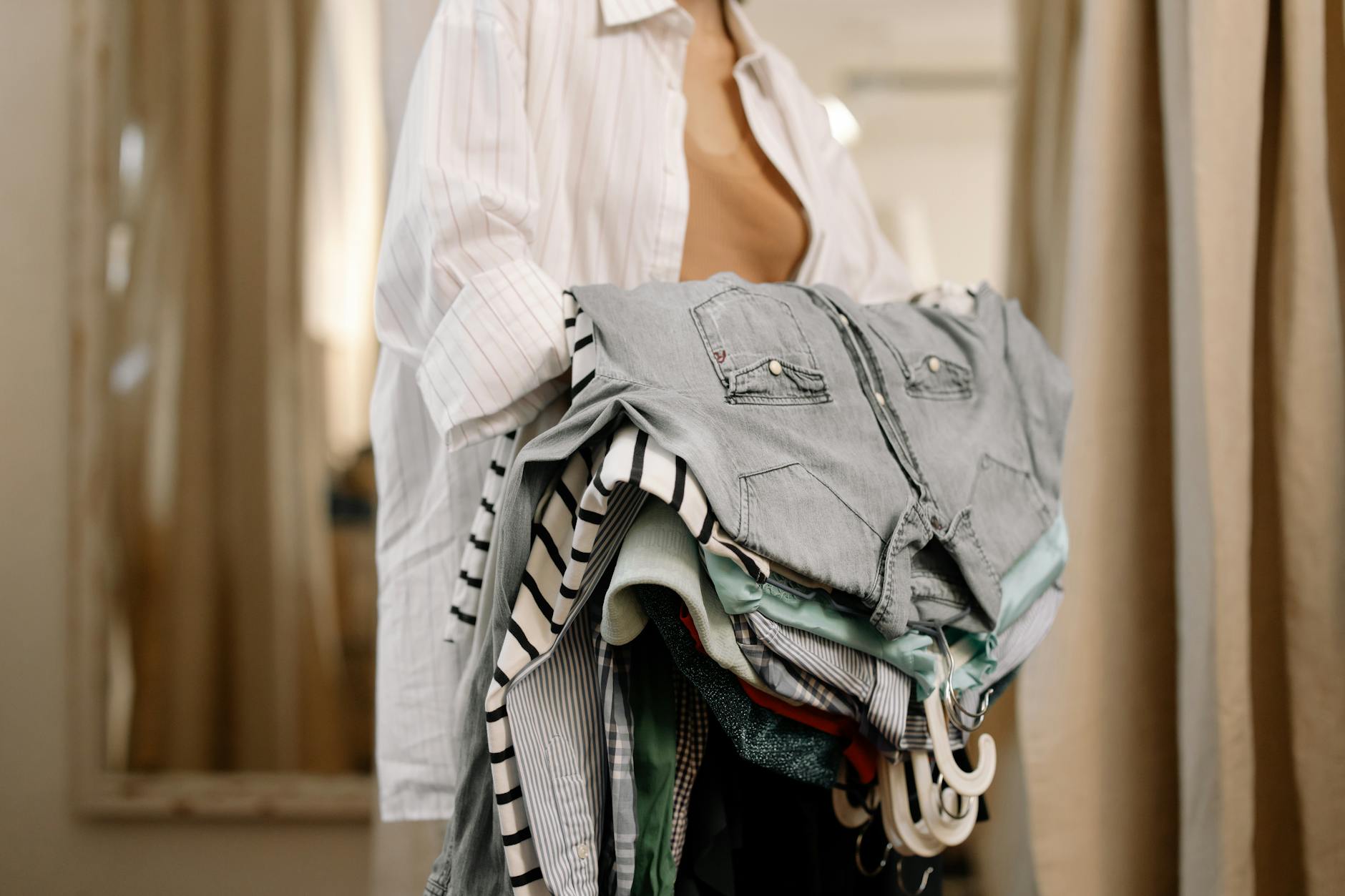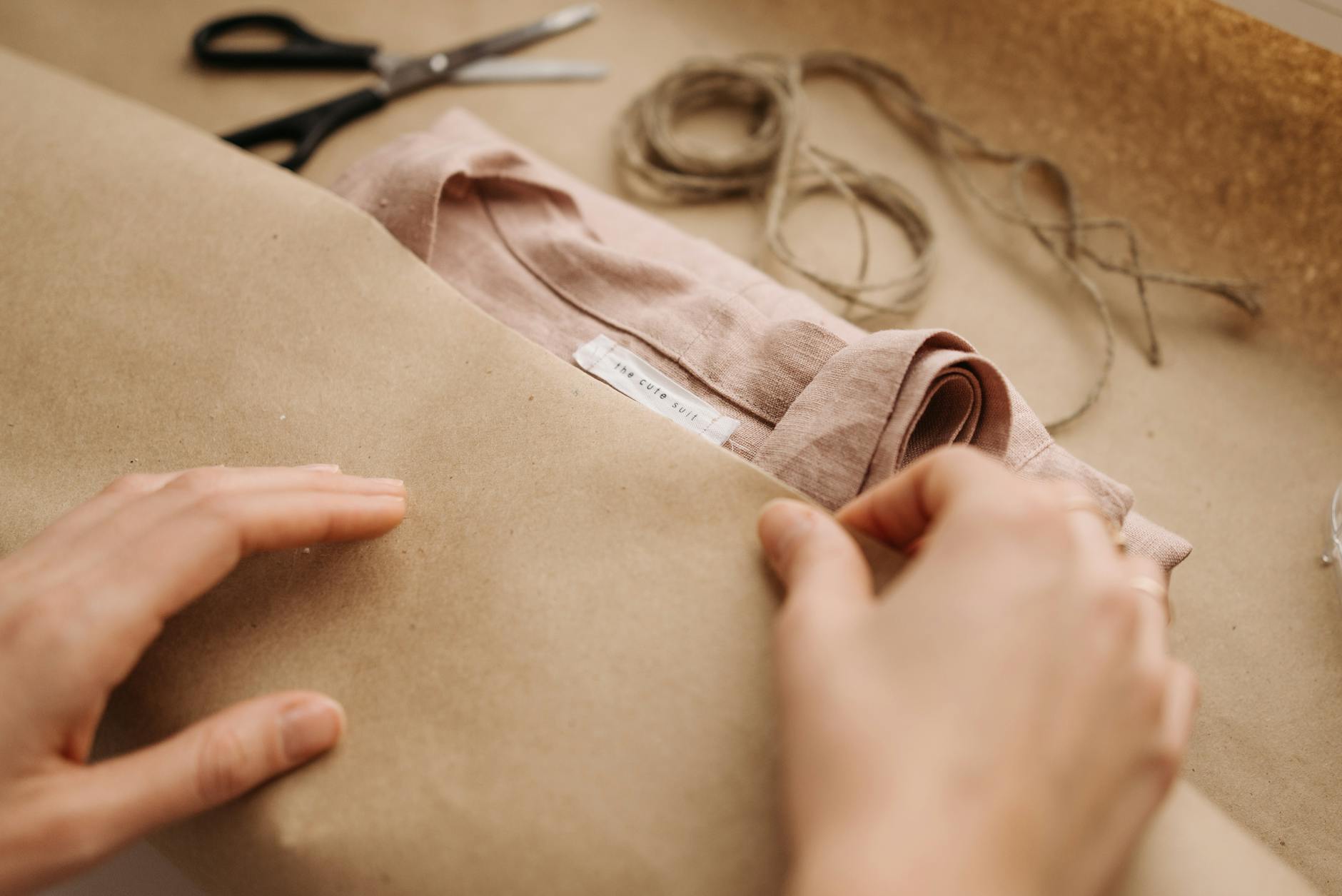Our clothes look harmless, yet they leave a big mark. Fast fashion floods landfills with barely worn pieces, wastes water, and drives heavy carbon emissions. That daily tee or last-minute dress can add up to a mountain of waste.
So, what is eco-friendly fashion? It is clothing made with less harm to the planet and people. It means smarter materials, cleaner production, and mindful consumption. Think organic cotton, hemp, linen, recycled fibers, and new options like mushroom or pineapple-based fabrics.
Eco-friendly fashion also favors fair work conditions and safer dyes. It cuts water use, limits toxic chemicals, and reduces energy needs. It keeps clothes in use longer through repair, resale, upcycling, and recycling. Fewer impulse buys, more quality pieces you wear often.
You will learn the core principles that make a garment truly sustainable, from fiber choice to factory standards. We will cover materials to look for, red flags to avoid, and simple ways to shop and care for clothes so they last. Expect a quick look at trends shaping 2025 too, like circular design, on-demand production, rental, and zero-waste patterns.
If you want a closet that feels good and does good, you are in the right place. By the end, you will know how to spot better options, build a tighter wardrobe, and skip the waste without losing style. Want a primer on the problem fast fashion creates? https://www.youtube.com/watch?v=Bh8dnw67rE0
Core Principles Behind Eco-Friendly Fashion
Eco-friendly fashion is simple at its core. It puts the planet and people first across the full life of a garment, from raw fiber to final stitch to end of life. If you are asking what is eco-friendly fashion in practice, it means smarter choices that reduce harm and raise quality.
Photo by cottonbro studioChoosing Sustainable Materials Over Synthetics
Materials set the footprint from day one. Switching from chemical-heavy fibers to options that grow with fewer inputs cuts pollution at the farm and the mill. Natural or recycled inputs can mean less pesticide use, lower fossil fuel demand, and fewer microplastic issues during wear and wash.
Think of it like choosing whole foods over ultra-processed snacks. Better inputs lead to cleaner outputs. Brands that favor responsible fibers also tend to use safer dyes and finishes, which keeps toxins out of waterways and off your skin.
Key upsides:
- Lower chemical load in cultivation and processing
- Less plastic shedding during washing
- Improved soil and biodiversity where crops are grown
Reducing Waste Through Design and Reuse
Waste starts on the cutting table and ends in landfills. Smart design aims for long wear, easy repairs, and patterns that leave little scrap. When clothes are sturdy and fixable, they stay in your closet, not the bin.
In 2025, fashion still generates about 92 million tonnes of textile waste each year. Overproduction and short wear cycles drive that number. Circular habits help:
- Design for durability with strong seams and timeless cuts
- Repair and resell to extend life
- Recycle and upcycle to keep fibers in use
Fast fashion pushes volume, then disposal. Eco fashion builds value, then reuse.
Ensuring Ethical Production and Fair Treatment
Sustainable clothes should also support the people who make them. That means fair wages, safe factories, reasonable hours, and respect for workers’ rights. Transparent supply chains reduce the risk of forced labor and unsafe conditions. When workers are paid fairly, quality rises, communities benefit, and you get a garment made with care. People and planet succeed together.
Minimizing Pollution and Resource Use
Cleaner production trims water, energy, and chemicals at every step. Low-impact dyes, closed-loop systems, and renewable power cut factory emissions and keep rivers clearer. Efficient washing, dyeing, and finishing save water without losing color or hand feel. The result is a smaller carbon footprint and healthier local ecosystems. You get the same style and comfort, with far less harm.
Read Also:
- Italy Outfit Inspiration for Fall 2025 (Milan to Amalfi)
- How to Wear a Tiger Print Dress With Confidence
- Tips And Recommended Best Plus Size Fashion On Amazon
Popular Materials in Eco-Friendly Fashion
If you are asking what is eco-friendly fashion, start with fiber choice. The right materials cut chemicals, save water, and keep plastic out of your laundry. Use the quick guides below to spot better options on tags and product pages.
Photo by Pavel DanilyukOrganic Cotton, Hemp, and Linen Basics
These natural fibers are grown without synthetic pesticides and are biodegradable, so they return to the earth at end of life when not blended with plastics.
- Organic cotton: Softer on skin and fields, with lower chemical runoff. Common in tees, underwear, baby clothes, and denim.
- Hemp: Tough, breathable, and needs little water. Great for jeans, work shirts, canvas jackets, and hats.
- Linen: Made from flax, dries fast and lasts long. Ideal for shirts, trousers, dresses, and bedding.
Why they are better:
- Lower pollution during farming and processing
- Compostable in the right conditions
- Durable fibers that age well
Label tips: Look for terms like “organic,” “hemp,” or “flax/linen.” Certifications to know include GOTS for organic cotton and EU Organic for farming standards.
Recycled Fibers from Waste to Wear
Recycling gives old textiles and plastics a second life, which eases landfill pressure and cuts virgin oil use.
- Recycled polyester (rPET): Often made from used plastic bottles. Used in activewear, fleeces, swimwear, and puffer shells.
- Recycled nylon: From fishing nets and carpeting, used in leggings, windbreakers, and bags.
- Recycled cotton: Made from factory scraps or old clothes, found in denim and tees.
Why they are better:
- Less waste, fewer landfills
- Lower carbon footprint than virgin synthetics
Label tips: Seek GRS or RCS certification. Choose tight-knit fabrics to reduce micro-shedding, and wash in a filter bag when possible.
Innovative Options Like Plant-Based Fabrics
2025 is big for next-gen materials that use renewable plants and agricultural waste, often with lower impact supply chains.
- Mycelium leather from mushrooms, used in sneakers and bags
- Piñatex from pineapple leaves, seen in accessories and trims
- Cactus and apple leather for jackets and wallets
- Bamboo linen (mechanically processed), breathable shirts and bedding
- Castor-bean based nylon for performance gear
Eco perks:
- Renewable inputs and smart use of ag waste
- Lower chemical load when made in closed or cleaner systems
- Animal-free leather alternatives
Label tips: Look for names like “mycelium,” “Piñatex,” or “bio-based nylon.” Check for transparency on processing, not just plant origin.
Benefits, Challenges, and Trends of Eco-Friendly Fashion
When you ask what is eco-friendly fashion, think cleaner clothes for a cleaner future. It cuts pollution, respects workers, and designs waste out from the start. Here is how it helps today, where it can feel hard, and what is next for 2025.
Photo by Ron LachKey Benefits for the Planet and People
Eco-friendly fashion reduces harm across the full life of a garment. The gains are real and visible.
- Lower emissions: Cleaner power, efficient mills, and recycled fibers cut carbon.
- Less waste: Design for durability, repair, and take-back programs keep clothes in use.
- Resource savings: Organic and regenerative farming use fewer chemicals and protect soil. Closed-loop dye houses save water.
- Healthier ecosystems: Safer dyes and finishes mean fewer toxins in rivers and seas.
- Worker well-being: Fair pay, safe factories, and reasonable hours support stable livelihoods.
- Better for your skin: Low-chemical fabrics and safer finishes reduce irritation.
Quick view:
| Benefit | What it means in practice |
|---|---|
| Lower emissions | Energy-efficient mills, recycled inputs |
| Less waste | Repair, resale, and recycling loops |
| Safer chemistry | Low-impact dyes, restricted substances |
| Fair work | Living wages, audited supply chains |
Overcoming Common Challenges
Higher prices, fewer options, and habit change can slow you down. You can still make it work.
- Tackle cost: Buy fewer, better pieces. Check cost per wear, not sticker price.
- Shop secondhand: Thrift, consignment, and verified resale stretch budgets fast.
- Rent or borrow: For events or trend pieces, pick short-term use over ownership.
- Choose timeless: Build a small capsule that mixes well and lasts.
- Repair first: Learn simple fixes or use a local tailor. Extend life by years.
- Spot greenwashing: Look for proof, not slogans. Seek material details, certifications, and factory info.
- Care smarter: Wash cold, air dry, and use a microfiber filter with synthetics.
Exciting Trends Shaping 2025 Sustainable Style
Progress is picking up. These shifts make better choices easier and more fun.
- Circular systems: Brands design for repair, resale, recycling, and take-back at scale.
- Repair services: In-house mending, spare parts, and tutorials keep clothes going.
- Radical transparency: Clear supplier lists, impact scores, and traceable fibers build trust.
- Creative materials: Recycled fibers, mycelium and fruit-based leathers, and bio-based nylons reduce virgin inputs.
- On-demand production: Made-to-order cuts overstock and dead inventory.
- Smart tools: AI sizing, digital wardrobes, and data-led drops reduce returns and waste.
Small steps count. If you upgrade care, buy secondhand, and favor quality, you already live the answer to what is eco-friendly fashion.
Conclusion
Eco-friendly fashion is practical, not perfect. It starts with clear choices. When someone asks what is eco-friendly fashion, point to smarter materials, fair work, and lower waste across a garment’s life. Pick organic and recycled fibers, safer dyes, and quality cuts that last. Support repair, resale, and take-back programs. That is the core.
The benefits stack up fast. Fewer toxins in rivers, lower emissions, and better conditions for workers. The challenges are real, like price and access, but a slower, mindful closet keeps costs in check. Trends for 2025 back you up, with circular design, on-demand production, and bio-based materials gaining ground.
Make your next step simple. Check labels for fiber content and proof, then choose one swap this week. Try organic cotton for basics, add a microfiber filter for synthetics, or repair a seam before buying new. Share what is eco-friendly fashion with a friend, and compare your best cost-per-wear pieces.
Your closet can look sharp and tread lighter. Which small change will you try first?










Pingback: Best Business Casual Outfits for Women, Fall Style Guide